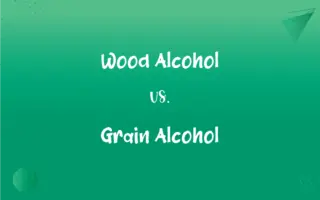Perichondrium vs. Periosteum: What's the Difference?
Edited by Harlon Moss || By Janet White || Published on December 26, 2023
Perichondrium is a dense layer of connective tissue surrounding cartilage, while periosteum is a membrane covering bones, except at joint surfaces.

Key Differences
The perichondrium surrounds and protects cartilage, aiding in its growth and repair. The periosteum covers bones, providing a surface for muscle attachment and facilitating bone growth and repair.
Both the perichondrium and periosteum consist of dense connective tissue, but the periosteum has a fibrous outer layer and a cellular inner layer, which the perichondrium lacks.
The perichondrium has a rich blood supply, essential for cartilage nutrition and growth. The periosteum is highly vascularized and innervated, playing a key role in pain sensation in bones.
Perichondrium contributes to cartilage growth and is essential during the repair of cartilage injuries. The periosteum is crucial for bone growth, especially during the healing of fractures.
The perichondrium contains cells that can differentiate into chondrocytes, the cells of cartilage. The periosteum contains osteoblasts and osteoclasts, crucial for bone formation and remodeling.
ADVERTISEMENT
Comparison Chart
Surrounds
Cartilage
Bones
Function
Aids in growth and repair of cartilage
Facilitates bone growth and repair
Composition
Dense connective tissue
Dense connective tissue with fibrous and cellular layers
Blood Supply and Nerves
Rich blood supply, less innervation
Highly vascularized and innervated
Cell Types
Contains precursors to chondrocytes
Contains osteoblasts and osteoclasts
ADVERTISEMENT
Perichondrium and Periosteum Definitions
Perichondrium
Perichondrium aids in the growth and repair of cartilage.
In cartilage injury, the perichondrium plays a key role in healing.
Periosteum
Periosteum is involved in bone growth and healing.
During bone fracture healing, the periosteum plays a crucial role.
Perichondrium
Contains cells that can develop into cartilage cells.
The perichondrium's cells differentiate to maintain cartilage structure.
Periosteum
Contains osteoblasts and osteoclasts for bone remodeling.
The periosteum actively participates in the bone's response to physical stress.
Perichondrium
Perichondrium is richly supplied with blood vessels.
The blood supply from the perichondrium is crucial for cartilage health.
Periosteum
Has a fibrous outer layer and a cellular inner layer.
The two layers of the periosteum work together for bone protection and nourishment.
Perichondrium
A layer of dense connective tissue surrounding cartilage.
The perichondrium provides essential nutrients to the cartilage.
Periosteum
A membrane that covers the outer surface of all bones.
The periosteum is essential for the attachment of muscles to bones.
Perichondrium
Encases most cartilaginous structures in the body.
The perichondrium covers the ear's cartilage, providing it with structure and nutrients.
Periosteum
Highly innervated and responsible for bone pain.
Injury to the periosteum can cause significant pain due to its nerve supply.
Perichondrium
The fibrous membrane of connective tissue covering the surface of cartilage except at the endings of joints.
Periosteum
The dense fibrous membrane covering the surface of bones except at the joints and serving as an attachment for muscles and tendons.
Perichondrium
(anatomy) a dense layer of fibrous connective tissue surrounding the cartilage of developing bone
Periosteum
A membrane surrounding a bone.
Perichondrium
The membrane of fibrous connective tissue which closely invests cartilage, except where covering articular surfaces.
Periosteum
The membrane of fibrous connective tissue which closely invests all bones except at the articular surfaces.
Periosteum
A dense fibrous membrane covering the surface of bones (except at their extremities) and serving as an attachment for tendons and muscles; contains nerves and blood vessels that nourish the enclosed bone
FAQs
What is the perichondrium?
A connective tissue layer surrounding cartilage.
Can perichondrium cells become cartilage cells?
Yes, they can differentiate into chondrocytes.
What is the primary function of the perichondrium?
To support cartilage growth and repair.
Is the perichondrium vascularized?
Yes, it has a rich blood supply.
What is the periosteum?
A membrane covering the bones, except at joints.
How does the perichondrium contribute to cartilage repair?
By providing cells and nutrients for cartilage regeneration.
Is the periosteum innervated?
Yes, it's highly innervated and involved in pain sensation.
Does the periosteum have layers?
Yes, a fibrous outer layer and a cellular inner layer.
Can the perichondrium become calcified?
In certain conditions, it can undergo calcification.
Where is the perichondrium located?
Around most cartilaginous structures in the body.
What cell types are found in the periosteum?
Osteoblasts and osteoclasts for bone formation and remodeling.
How does the periosteum respond to injury?
It plays a key role in the healing process of bone fractures.
What is the difference between perichondrium and periosteum?
Perichondrium surrounds cartilage, while periosteum covers bones.
Does the perichondrium have a role in joint movement?
Indirectly, as it supports the health of cartilage in joints.
Can diseases affect the perichondrium?
Yes, diseases like chondrosarcoma can involve the perichondrium.
What role does the periosteum play in bone health?
It facilitates bone growth, repair, and muscle attachment.
How does age affect the periosteum?
Its regenerative capacity can decrease with age.
Is the periosteum involved in bone growth in children?
Yes, it's crucial for the growth and development of bones in children.
Is the periosteum present in all bones?
It covers all bones except at joint surfaces.
Can the periosteum be damaged?
Yes, through injury, leading to significant pain.
About Author
Written by
Janet WhiteJanet White has been an esteemed writer and blogger for Difference Wiki. Holding a Master's degree in Science and Medical Journalism from the prestigious Boston University, she has consistently demonstrated her expertise and passion for her field. When she's not immersed in her work, Janet relishes her time exercising, delving into a good book, and cherishing moments with friends and family.
Edited by
Harlon MossHarlon is a seasoned quality moderator and accomplished content writer for Difference Wiki. An alumnus of the prestigious University of California, he earned his degree in Computer Science. Leveraging his academic background, Harlon brings a meticulous and informed perspective to his work, ensuring content accuracy and excellence.

































































